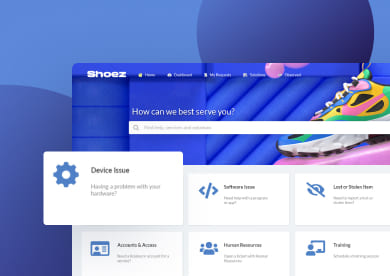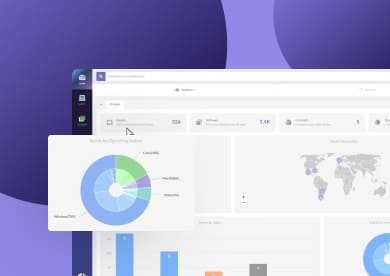If your IT team is drowning in tickets, stuck in manual processes, and struggling to keep up with the pace of change, you’re not alone. Many organizations are now asking the same question: how to switch from ITOps to DevOps — and more importantly, how to do it without breaking what already works.
The good news? You don’t need to start from scratch. In this article, we’ll break down why moving from traditional IT Operations to DevOps practices is a smart move and how to make the switch in just a few clear, practical steps.

Why make the transition to DevOps?
If your IT team is responsible for keeping systems running, managing infrastructure, and supporting internal tools or business-critical applications, adopting DevOps might be the next step.
This is especially true for organizations undergoing digital transformation, moving to the cloud, or supporting development teams that need to release updates more frequently.
You don’t need to be building software to benefit from DevOps. If your IT operations are slowing down the business or making it hard to adapt quickly, it’s a sign that it’s time to modernize how your team works.
You’ll know it’s time to switch from ITOps to DevOps when manual tasks are slowing you down, collaboration across teams feels like a bottleneck, or infrastructure changes are risky and inconsistent.
If you’re starting to experiment with automation, scripting, or cloud-native tools — or you’re struggling to support faster delivery cycles — these are clear signs your team is ready for DevOps practices.
3 major benefits from switching from ITOps to DevOps
Making the switch isn’t just about keeping up with trends — it’s about building a more agile, efficient, and future-ready IT operation. Here are three key benefits to expect:
- Faster delivery with fewer bottlenecks – Automate manual tasks and streamline deployments so your team can move at the speed of business.
- Stronger collaboration between teams – DevOps breaks down silos between IT and developers, improving communication and accountability.
- More reliable, scalable infrastructure – With Infrastructure as Code (IaC) and continuous monitoring, you gain consistency, reduce errors, and make scaling easier.

How to switch from ITOps to DevOps in X steps
Transitioning from ITOps to DevOps is more than just adopting new tools—it's about reshaping team culture, workflows, and mindsets. Below is a step-by-step roadmap to guide your organization through this evolution:
1. Assess your current operations and define your DevOps goals
Before jumping into tools or training, it’s essential to take a hard look at how your IT team currently works. Start by identifying what’s slowing you down. These pain points will help you understand what DevOps can actually solve for your organization.
At the same time, set clear and realistic goals for the transition. Are you trying to speed up deployment times? Improve reliability? Increase automation to reduce human error? The answer will guide your roadmap and give you measurable targets to work toward.
2. Create a culture of collaboration and shared ownership
DevOps isn’t just a technical shift — it’s a cultural one. To make it work, your team needs to move away from silos and start working together across roles. That means IT, development, and even security must collaborate closely, sharing responsibilities and goals instead of handing things off blindly.
Encourage open communication, foster a no-blame mindset, and make space for experimentation. Building trust and breaking down “us vs. them” thinking is what turns a group of specialists into a unified, high-performing DevOps team.
3. Upskill your team to bridge the knowledge gap
A successful DevOps transition depends on your team having the right skills — and that usually means learning new tools, concepts, and ways of working. While your IT staff likely has deep expertise in infrastructure and support, they might need training in areas like scripting, automation, cloud platforms, or CI/CD pipelines.
Invest in practical, hands-on learning. That could be workshops, certifications, or internal knowledge-sharing sessions. The goal isn’t to turn everyone into a DevOps engineer overnight, but to give each person the skills they need to contribute effectively in a DevOps environment.
4. Start automating repetitive tasks
One of the quickest wins in DevOps is reducing manual work. Start by identifying tasks your team does over and over again — things like server provisioning, software deployments, or system updates. These are perfect candidates for automation.
Use tools that fit your environment, whether that’s scripting with PowerShell, managing infrastructure with Terraform, or deploying apps with Ansible. Even small automations can save time, prevent errors, and free your team to focus on higher-impact work.
5. Implement Infrastructure as Code (IaC)
Managing infrastructure manually doesn’t scale. With Infrastructure as Code, you can define servers, networks, and configurations in version-controlled files — just like you do with software code. This brings consistency, repeatability, and visibility to your environment.
IaC also makes it easier to spin up test environments, recover from failures, and collaborate with development teams. Start small, learn the tools (like Terraform or AWS CloudFormation), and make IaC a core part of your infrastructure strategy.
6. Build your CI/CD pipeline
Continuous Integration and Continuous Delivery are at the heart of DevOps. They help automate how code is tested, integrated, and pushed into production — reducing delays and catching problems early. Even if your team isn’t writing code, CI/CD principles can still apply to infrastructure changes and configuration updates.
Begin by creating simple workflows that automatically test and deploy changes. Over time, you can expand the pipeline and integrate it with monitoring, rollback strategies, and approval gates to balance speed with control.
7. Monitor everything and use data to improve
DevOps is about continuous improvement, and that starts with visibility. Make sure your team has real-time insights into system health, performance, and deployment success. Monitoring tools like Prometheus, Grafana, or Datadog help track what’s happening — and alert you when things go wrong.
But don’t just collect data — use it. Regularly review key metrics like deployment frequency, lead time, and incident recovery time to spot bottlenecks and make informed decisions about what to improve next.
8. Start small, learn fast, and scale gradually
Don’t try to transform your entire IT operation in one go. Pick one team, one service, or one project to pilot your DevOps approach. Use it to test ideas, tools, and workflows in a safe environment — then take what you learn and apply it more broadly.
This incremental approach reduces risk, builds confidence, and gives you early wins to rally support across the organization. DevOps isn’t a switch you flip — it’s a journey, and it works best when you grow into it step by step.

In short
Switching from ITOps to DevOps isn’t about throwing everything out and starting over — it’s about evolving your team to work smarter, move faster, and deliver more value. With the right mindset, the right tools, and a clear step-by-step approach, your IT team can lead the way toward a more agile, collaborative, and resilient future.
Ready to take the first step? Start small, stay focused, and let DevOps grow with your team.















